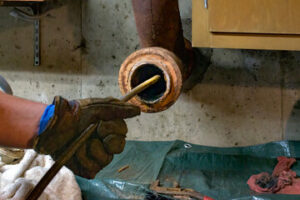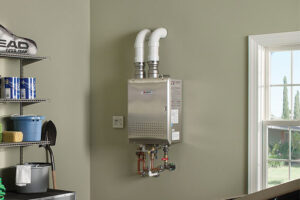Drain Repair Near Me is an important service that can prevent major plumbing issues. A drain that is damaged may cause sewage or wastewater to back up into the home, which can lead to significant and expensive damage.

Nothing puts a damper on a nice dinner like a clogged sink or ruins your morning shower like standing ankle-deep in soapy water. Follow these expert tips to keep your drains in good condition.
Clogged drains are a major headache and can lead to expensive, long-term damage. The good news is that most clogs are preventable by being shrewd about what does and doesn’t belong in your pipes.
When plumbing water encounters a full or partial blockage, it can cause reactions that range from backups to a lack of drainage entirely. Some clues are more obvious than others, but it’s important to act fast if you suspect something is wrong with your home’s drain lines. Here are some signs that you might have a clog and some ways to prevent them:
If you notice standing water in your home’s sinks, bathtubs or showers, it could indicate a drain line blockage. This could be caused by a buildup of soap scum, hair, food particles or minerals that are trapped in the pipes. If left untreated, these clogs can erode the interior walls of your pipes and cause them to break down over time.
Oil and grease solidify in your drains when they cool down, creating a sticky substance that can trap other debris. Over time, this clog can grow so large that it prevents water from flowing properly through your pipes. If you notice this problem, try pouring boiling water down your drains to dissolve the clog. You can also use a wire coat hanger or similar object to dislodge the clog in more stubborn cases.
Another common cause of clogged drains is foreign objects that end up in the pipes. This is especially true of things that aren’t able to dissolve, such as toys, feminine products and silverware. It’s a good idea to invest in a drain cover for each fixture in your home and to be careful about what you flush down the toilet.
While many clogs can be addressed by plunging or using household cleaners, you may need to call a plumber if the problem persists. This could be a sign that the clog is deeper in your sewer line, which can only be resolved with professional help. If you’re concerned about your home’s drain lines, contact us to schedule an inspection.
Leaks
Leaking drains can be a real nuisance and may lead to expensive damage if left unchecked. They are often caused by corroded or worn-out parts or by the build-up of grime around the drain flange.
Fortunately, there are several ways that you can repair a leaking drain. One way is to use a rubber gasket to seal the hole in the drain. You can find these at most hardware stores. Another way to fix a leak is to replace the drain flange with a new one. This will also help to prevent leaks.
Another common way to fix a leaking drain is to apply a silicone sealant. This is an inexpensive option and will usually do the trick. However, it is important to follow the product instructions carefully. It is also recommended that you test the sealant with a drop of water before using it in your home.
Some signs that a drain pipe is leaking include moisture in the surrounding area and a foul smell. A leaking drain can lead to mould and damp, which can cause serious structural problems for your property. A leaking drain pipe can also result in subsidence. This occurs when the leaking water soaks into the soil around the property, which causes it to soften and shift.
If you notice any of these signs, it is important to contact a professional plumber for assistance as soon as possible. A professional will be able to assess the damage and provide a permanent solution.
In the meantime, you can try some simple fixes to temporarily solve a leaking drain. One method is to wrap the leaking part of the plumbing with duct tape. This is a quick and inexpensive solution that will keep your drain working until a more permanent fix can be installed.
You can also buy a drain repair kit, which contains a rubber patch and a metal clamp. This will work to seal the drain, but it is important that you choose the right size sleeve. Make sure that it is the same length as the damaged section of pipe. If you have a cast iron drain pipe, you can also try placing a piece of rubber gasket material over the leak and securing it with a hose clamp.
Damage
The most common drain repair issues are due to clogs or leaks. These are easy to diagnose and generally don’t take too long to fix. Clogged drains typically show signs such as water slowly flowing down the sink, or gurgling noises. Other symptoms include soap scum, oil, or hair buildup that builds up in your plumbing system. Using harsh chemical cleaners to clear these types of clogs can damage your pipes, so it’s best to call in a professional.
More serious drain problems such as broken or cracked drain lines will require more extensive repairs. These can be expensive and disruptive. The first step in this process is to locate the damaged section of pipe. This may involve digging up a section of your yard to get to it. Once you find the section of pipe that needs replacing, it will need to be removed and cut out with appropriate tools. Once the old section of pipe is removed, it will need to be cleaned and prepared for a new liner.
There are many reasons your drains can break or crack. A few of the most common include:
Freezing and Melting of the Ground – when the ground freezes it expands and can cause stress on your drainage pipes. Tree Root Intrusion – tree roots can grow into your drainage pipes and crack or break them. Misaligned Pipes – misaligned drain pipes can lead to water leakage and even cause a collapsed drain.
A leaking or cracked drain is not only annoying and inconvenient, but it can also damage your home’s structure and foundation. This often shows up as cracking walls or sagging floors.
Until recently, fixing these types of problems would have required extensive excavations to access the underground drainage pipes and replace them. However, the modern approach to addressing these issues is a less invasive method known as drain relining (also known as trenchless sewer line repair or cured in place pipe). This process is quick, affordable, and can be done without disrupting your home. For more information on this amazing new way of dealing with faulty drains, contact the experts at Greenstar.
Trenchless Pipe Lining
Over time, many old homes’ drain lines suffer from corrosion. This is especially true of older buildings with copper water lines or cast iron drains. Corrosion is the cause of clogs, pinhole leaks and other serious issues. Using a new epoxy liner, your plumber can make your client’s drain lines resistant to future calcification.
Trenchless Pipe Lining
Unlike traditional sewer replacement, trenchless methods involve less digging and can be performed in a much shorter period of time. This method is also more cost-effective and reduces the amount of damage to the landscape, driveway or sidewalk. In addition, trenchless repair methods are usually less disruptive to everyday activities in the home.
The two most common trenchless sewer lining methods are lateral pipe lining and pipe bursting. Your plumber will be able to determine which one is best for your home during the inspection process by examining the condition of your existing pipes with a sewer camera.
In lateral pipe lining, a felt tube saturated with epoxy is placed inside your existing pipe and then inflated. Then hot water or steam is used to cure the resin, forming a strong pipe within your old pipe. Your technician can then remove the cable, leaving behind a durable pipe liner that can last for decades.
Cured-in-place pipe (CIPP) lining is a similar trenchless method to lateral pipe lining, but it creates a new pipe within your existing one. In this case, your plumbing tech will create two holes to insert a new pipe, then pull a new, larger drain liner into place over the old pipe. This method increases the diameter of your drain line while also sealing off any cracks and preventing leaks.
Both CIPP and lateral pipe lining are great options for older pipes with a lot of cracks or deterioration. However, if your pipes are extremely damaged or cracked, your plumber may need to use the trenchless method of pipe bursting instead. In this case, a new pipe is pulled into place from a point outside the house — usually through your toilet cleanout or a rooftop vent stack — then connected to your existing drainage system.

